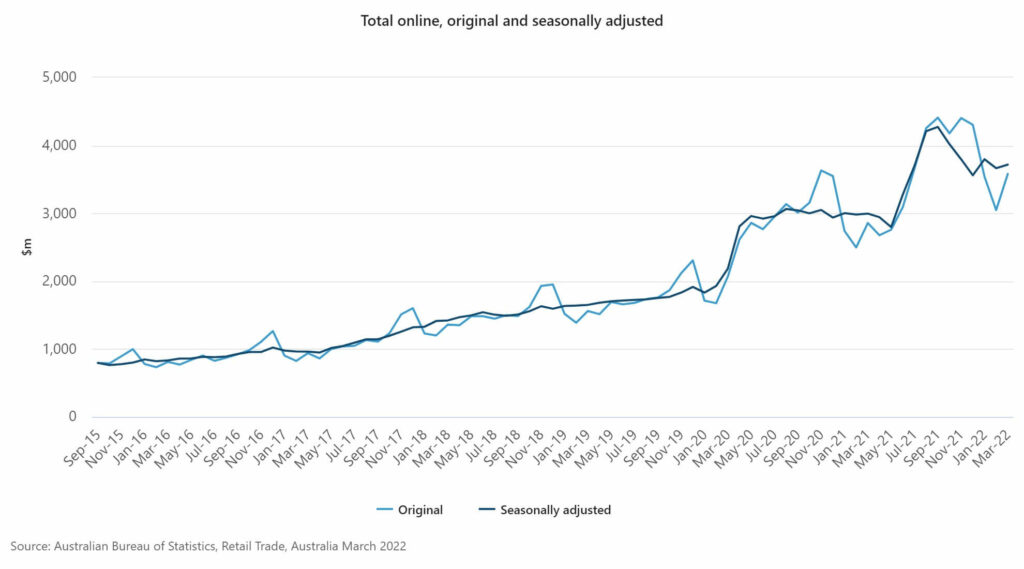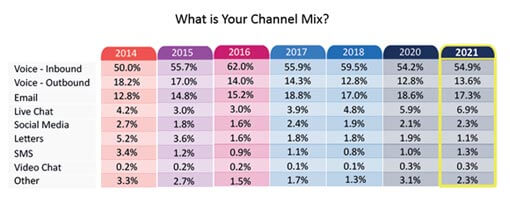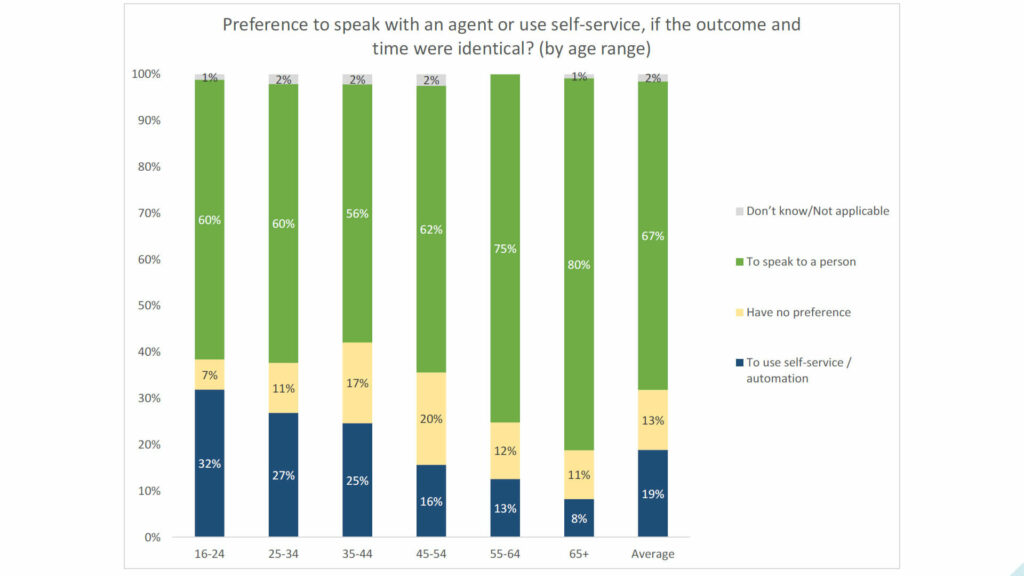An omnichannel contact centre is not only for the younger customer
We talk a lot about omnichannel and multi-channel these days. We all know the benefits of employing multiple channels of communication with customers. Giving customers a choice of how to contact us means we don’t miss out on those key contacts that can make or break the relationship.
In those conversations around multi-channel it’s often assumed that the new digital channels – social media, messaging, web chat – are predominantly used by the younger generations. And that older people, say Boomers and older X-Genners, still prefer the personal engagement that comes from picking up the phone.
However, that is not necessarily an accurate assumption.
Growth of digital
During the COVID-19 pandemic lockdowns, everyone had to get used to new ways of getting things done. People who had never ordered anything online had to get used to doing the weekly grocery shop on the Coles or Woolworths website, for example.
The explosion in online shopping since March 2020 among all age groups shows that people got comfortable with digital channels out of necessity.

Source: Australian Bureau of Statistics
During the same period, customers who would normally call a contact centre switched to digital channels due to long wait times, as demand on contact centres rose at a time when they had to shut down offshore operations and transition their Australian staff to working from home.
Change in channel usage
The decline of the voice channel, which began in 2016 has only been accelerated due to COVID-19 as the diagram below from a CallCentreHelper.com survey shows.

Source: CallCentreHelper.com
We have seen customers move away from voice towards email and live chat in particular. Other more traditional forms of communications, such as written letters, have declined as well as voice.
The UK and US Contact Centre Decision Makers’ Guides make the same point. Voice is of course still the predominant channel for the contact centre (63.5% in UK, 62.6% in US). These are the lowest recorded figures for voice since the survey started.
Notably voice self-service (IVR) increased from 4.9% in 2019 to 6.2% in 2020 and 2021, perhaps reflecting contact centres’ use of call deflection to handle increase volumes during the pandemic. The Decision Maker’s Guide surveys also show strong growth in web chat, from 3.6% in 2019 to 6.8% in 2021.
Interestingly both the CallCentreHelper.com and Decision Makers’ Guide surveys show that social media usage as a contact centre channel has levelled off or even reduced slightly.
Self-service usage by age
Across all age groups, the percentage of people preferring to speak to a person rather than use self-service or automation is 67% (see graph below). This is similar to the number of people using the voice channel.
 Source: UK Contact Centre Decision Makers Guide 2022
Source: UK Contact Centre Decision Makers Guide 2022
As you would expect this figure does change by age group, but not as significantly as you might expect, and probably not in the way you would expect. The younger age groups are more decisive in their channel preferences and more of them are willing to self-serve. However, people aged from 35 to 55 are quite open to using both live and self-service, with a large percentage actually having no preference. It’s only above 55 that the determination to speak to a live person gets significantly higher than the average.
Match channels to demographics
What statistics show is that full suite of channels is not important to every individual. Each person has their own channel preferences, most will not have a single preferred channel that they stick to, and some have no channel preferences at all.
As we said in our recent omnichannel article, the most important thing for customers is that their problem gets solved, and they want that to happen with minimum effort on their part.
Contact centres need to make sure the key channels that are available, are the ones your target demographic is likely to want to use. For example, a brand aimed at retirees is unlikely to see much traffic on Instagram or Whatsapp. A clothing brand that sells heavily through influencers, on the other hand, might have little need for a voice channel at all.
We should also bear in mind that this is not just a case of voice versus all the digital channels. Each digital channel also has its own uses and demographic of people that would use it. So sure, Boomers might not use Instagram but they do use Facebook and Messenger.
Do not ignore the fact that an ever-increasing number of people of all ages are embracing the power of the smartphone in their pocket and taking to digital to get things done more quickly. While the pandemic has driven the growth of digital for the last few years, there are other factors to consider.
Today’s 50-somethings are tomorrow’s 70-somethings. They will be much more tech-savvy and acquainted with digital channels than today’s retirees – so plan for that. And whatever age they are, people value convenience and speed. Educating older cohorts in the benefits of using digital channels can dramatically increase their openness to using them.
Ensure omnichannel is most important thing
Whatever channels your contact centre does make available, the crucial point is to make sure they are all joined up. True omnichannel style interactions should be seamless so that customers can move from channel to channel without having to repeat information. When there are limited number of channels available, it becomes quite glaring and obvious to the customer if they are not integrated and makes for a broken customer experience.
If your strategy is to appeal to older customers, then making the customer experience as simple as possible for them to navigate when you do have a spread of channels is critical.
TSA are Australia’s market leading specialists in CX consultancy and contact centre services. We are passionate about revolutionising the way brands connect with Australians. How? By combining our local expertise with the most sophisticated customer experience technology on earth, and delivering with an expert team of customer service consultants who know exactly how to help brands care for their customers.